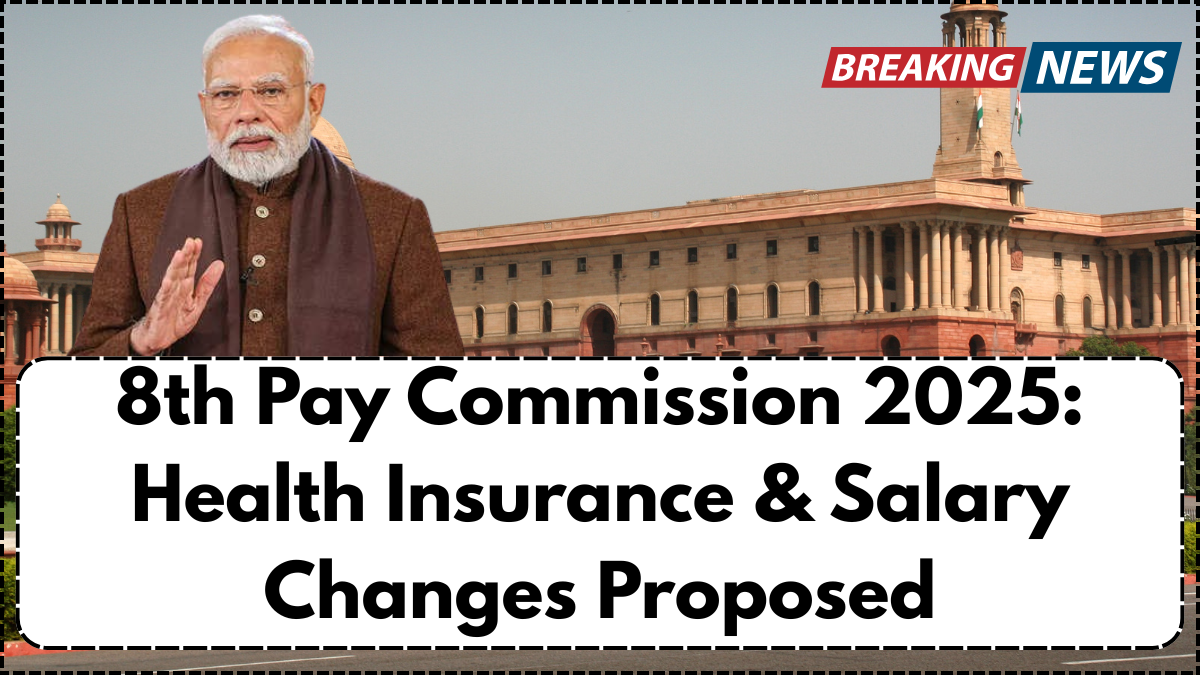The Central Government’s 8th Pay Commission is drawing significant attention in June 2025, with major proposals targeting employee welfare and structural salary improvements. While the final report is still under review, leaked insights and early drafts point to two major areas of reform: enhanced health insurance coverage and a revamped central govt salary matrix.
The 8th Pay Commission, expected to be rolled out by late 2025 or early 2026, aims to address inflation-linked concerns, improve employee retention, and realign government pay scales with contemporary economic conditions. Here’s a breakdown of the proposed changes and what they could mean for over 50 lakh central employees.

Proposed Salary Restructuring Under the 8th Pay Commission
One of the standout proposals is a complete overhaul of the basic pay structure. As per preliminary recommendations, the minimum basic pay is set to be increased from the current Rs 18,000 to Rs 26,000. Additionally, the fitment factor may be revised from 2.57 to 3.1, which would significantly boost take-home salaries for employees across all levels.
Moreover, pay level rationalization is under consideration to correct existing pay anomalies among different departments. The goal is to create a more uniform and transparent pay architecture, minimizing the gaps between similar-grade employees in different ministries or services.
Central Govt Salary Table: Current vs Proposed (June 2025)
| Pay Element | 7th Pay Commission (Current) | 8th Pay Commission (Proposed) |
|---|---|---|
| Minimum Basic Pay | Rs 18,000 | Rs 26,000 |
| Fitment Factor | 2.57 | 3.1 |
| DA Merger Proposal | Not Applicable | Likely Post DA > 50% |
| Pay Matrix Adjustment | As per 7th CPC | Revised Levels Being Drafted |
| Expected Implementation | Already in Force | Late 2025 / Early 2026 |
Comprehensive Health Insurance for Govt Employees
Another major recommendation of the 8th Pay Commission is to introduce a universal health insurance scheme for all central government employees and pensioners. Unlike CGHS, which is limited to select cities, this new policy is designed to be cashless and pan-India, covering both active staff and retirees.
The proposed policy will be managed through a centralized government insurer and will offer:
- Rs 10 lakh base coverage per family
- Cashless hospitalization at empaneled hospitals
- Critical illness add-ons up to Rs 25 lakh
- Maternity and OPD cover
This move is expected to benefit not just serving personnel but also around 65 lakh pensioners and their dependents.
Implementation Timeline and Cabinet Review
As of June 2025, the Pay Commission’s recommendations are undergoing cabinet-level review. Once finalized, the changes will likely be included in the Union Budget 2026. However, retrospective effect from January 2026 is under consideration to align with past practices.
The Finance Ministry has also initiated consultations with employee unions to gather feedback on the proposed salary slabs and insurance models. A consensus model is being pursued to ensure smooth implementation.
Conclusion: A Bold Step Toward Modernization
The 8th Pay Commission 2025 signals a bold shift in how the government compensates and cares for its workforce. The inclusion of structured health insurance and a more balanced central govt salary architecture will not only address long-standing grievances but also modernize India’s public sector HR policies.
For central employees and pensioners alike, the upcoming months will be crucial as decisions get finalized. With strong signals pointing toward implementation by early 2026, now is the time for beneficiaries to stay informed and prepared.
FAQs About 8th Pay Commission 2025
What is the expected date of implementation for the 8th Pay Commission?
The government is aiming for an early 2026 rollout, possibly with retrospective effect from January 2026.
Will pensioners also benefit from the proposed changes?
Yes, pensioners are expected to benefit from both the revised pension calculation and the new health insurance scheme.
How much salary hike is expected?
If the proposed fitment factor of 3.1 is approved, employees could see an approximate 20–25% increase in take-home salary.
What are the key differences from the 7th Pay Commission?
Key differences include a higher minimum basic pay, improved fitment factor, and a universal health insurance model.
Is the health insurance scheme compulsory?
Yes, it is expected to be auto-enrolled for all central government employees and pensioners.
Click here to learn more
Sachin is a dedicated writer specializing in education, career, and recruitment topics, delivering clear and actionable insights to empower readers.



